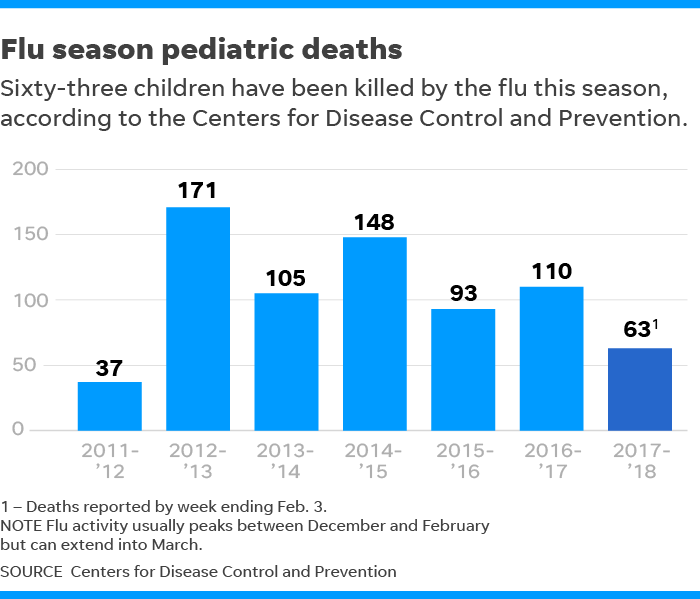This flu season is the worst in nearly a decade — and it's not getting better

Flu is sickening and hospitalizing Americans at rates not seen in nearly a decade, and the season is getting worse, federal health officials said Friday.
In the latest update, the federal Centers for Disease Control and Prevention reported 10 new child deaths and the highest flu hospitalization rate since the agency started keeping comparable records in 2010. It reported the highest rate of flu-like illnesses since the flu pandemic of 2009.
“We don’t know if we have hit the peak yet," said Anne Schuchat, acting CDC director. "We could potentially see several more weeks of increased flu activity.”
Although deaths among children — at 63 kids — and adults have not been extremely high, it is possible they could increase in line with hospitalization rates, she said.
Got the flu?:Here's what works to lessen the misery
Business:The nasty flu season could cost U.S. businesses $15B in lost productivity
Watch:Florida nurse posts epic rant on terrible flu season: 'Wash your stinking hands'
It is not clear why this flu season is so intense and so unusually widespread — causing wide swaths of misery in 48 states and high levels of illness in 43 of them as of Feb. 3.
The viral strain causing the most illness this year, H3N2, causes especially severe illness and is hard to control with vaccination.
In previous severe flu seasons — not counting pandemics caused by newly mutated viruses — up to 56,000 people have died in a single year. the CDC estimated. The majority of deaths have been adults over age 65.

In the most recent week data were available, 10% of deaths in the nation were from influenza and pneumonia. The agency does not keep an exact count of adult flu deaths but closely tracks child deaths. In the previous severe flu season, in 2014-2015, 148 children died.
This flu season is more than 11 weeks old, and the average flu season lasts 16 weeks, though some go for as long as 20 weeks.
More details from the latest report:
• Since this flu season started, Americans have been hospitalized for the illness at a rate of 59.9 per 100,000 people — the highest rate recorded by this point in a recent flu season and a level not reached until the end of the previous severe season, 2014-2015.
• Hospitalization rates remained unusually high among adults ages 50 to 64, a group typically less likely to get seriously ill than the very young and very old.
• 7.7% of visits to health care providers in the week ending Feb. 3 were for flu-like illnesses, a weekly intensity level matching that in the swine flu pandemic of 2009.
The virus causing the most illness has been around for decades. Scientists are studying circulating viruses to see whether anything unusual is going on, Schuchat said.
There are early indications, including data from Australia and Canada, that vaccination against H3N2 was less effective than usual this year, in the range of 10% to 17%, instead of the usual 30% or so.
Schuchat said people should still get the flu shot and noted that strains better controlled by vaccines are becoming more common as the season progresses — and can even infect people who have already had the flu.
“There is a lot of fear and alarm about this flu season,” Schuchat said. Most children and adults who get sick will recover at home without complications, she said. She urged parents who see signs of worsening illness in a child — such as difficulty breathing or a fever that goes away, then returns — to seek immediate medical care.
“This season is a wake-up call about how severe influenza can be and how we can never let our guard down,” she said.
